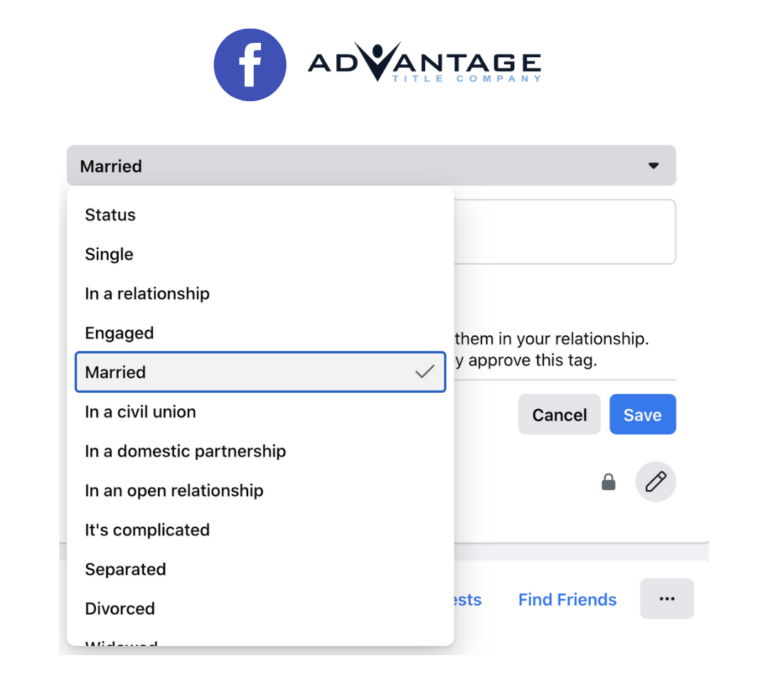
by admin | Jan 5, 2022 | Uncategorized
No matter how amazing you are at your job, sometimes the most difficult part is finding new business.
Whether you’re a real estate agent or a lender, you’re going to have plenty of competition out there. Buyers and sellers have options, and it’s an uphill battle to get their attention.
That’s why the secret to success is maximizing your repeat clients and referrals. If you can take your existing clients and increase their impact exponentially through subsequent transactions and connecting you with their friends and family, you’ll be well-positioned for prosperity.
It’s always easier to keep an existing client than to find a brand new one, especially if you’re amazing at your job.
Keep these 5 tips in mind to grow your business through repeats and referrals:
- Deliver Excellent Service
It all starts here. If you want clients to come back and if you want them to refer you to their friends, you have to do an awesome job for them. You have to do an awesome job for every client, every time. You never know which client will be the one who generates a long string of business for you in the months and years ahead.
2. Continue Providing Value
Once the transaction is over, let them know that you won’t disappear on them. Make sure they know you are still available for any questions they have. Then add them to an automated email campaign that provides important information and news about the housing market, home maintenance and decorating tips, or refinancing opportunities. Every piece of outreach should provide value to their lives.
3. Recognize Special Moments
While automation is great and will save you loads of time, a personal touch makes all the difference. A simple handwritten note on their birthday or the anniversary of their home purchase lets them know that you genuinely care about them. Look for other milestones, too — births, graduations, new jobs. In this age of digital communication, a quick, friendly, handwritten note still works wonders.
4. Be Helpful on Social
Your social media presence is your chance to establish yourself as an expert in your industry … and a pretty fun person to work with. A high-performing presence is a healthy blend of useful, informative information and fun, engaging content. Speaking of engagement, make sure you’re always ready to reply to comments and keep the conversation going. That’s what makes it social!
5. Ask for Referrals
The final step to getting more referrals is the one that many often forget. You have to ask for them. If you’ve done a great job for your clients, they will be happy to spread the word. All you’ve got to do is give them a little nudge. Let them know how much you appreciate it when they refer their friends and families. You can even consider offering a special referral reward when you close a deal with someone they’ve referred to you.

by admin | Jan 5, 2022 | Uncategorized
The concept of ground rent in Baltimore and surrounding counties may be traced back to colonial times when investors bought tracts of land from the newly sovereign colonial governments and allowed tenants who otherwise could not purchase land for themselves to make small, incremental rent payments as a less-expensive alternative to land ownership.
This practice may be out of date in today’s market yet most leases renew in perpetuity. Some ground rent holders are registered with the State Department of Assessment & Taxation, many leases holders are unknown.
In the past, If the owner of the ground leases couldn’t be identified, we’d have to hold from the seller 3 years’ worth of estimated ground rent payments, plus attorney’s fees, in the event that the ground rent holder suddenly appeared and made a claim.
That typically meant that we’d collect an average of about $700 from the seller to hold in escrow for three years.
Now the state of Maryland has changed its statute and noted that if the ground rent owner has not registered the ground rent with the state, past due amounts may not be demanded.
That means we no longer have to hold estimated ground rent payments or attorney fees, and your sellers’ net proceeds just increased by $700!
Contact us for more information on identifying registered ground rents and how to extinguish an existing ground rent.

by admin | Jan 5, 2022 | Uncategorized
Almost no closing is impossible with Advantage Title, and that’s because of our awesome team members like Becky Ohlinger.
Whether it’s settling on a property here in Maryland or maybe coordinating a closing in Argentina or the Dominican Republic, Becky will find a way to get it done. We already know how hard she works for our clients, so let’s take a few moments to get to know her a little better outside the office.
Are you an early bird or a night owl?
I try to get up at 6:00 every day. I do a few chores and then log in to my computer and answer emails. I don’t drink coffee, I don’t watch the news. I just get up and get moving.
Who is the most famous person you ever met?
I was on a plane from New York to Cleveland. I sat with a bunch of guys heading to a basketball game. We talked for the whole flight. We got off the plane and said our goodbyes. My brother was picking me up from the airport, and he was in shock! He said do you know who that was? That’s Patrick Ewing!!!”
What’s your craziest settlement story?
I had an out-of-country closing in Argentina. It was challenging to get notarized because the embassies are closed during the pandemic. Luckily, Argentina is part of the Hague Convention. We can accept their notaries but they must go to an Apostille, which is like a notary for notaries that verifies everything is valid. I’m working on another one right now in the Dominican Republic.
What’s the weirdest thing you’ve ever eaten?
The weirdest thing I’ve had and liked is Octopus Sunomono! It’s sushi with cucumbers and rice vinegar.
What is the first thing you are doing when the pandemic is over?
A cruise!! I really want to go to the eastern Caribbean — Grand Turks or Jamaica. I’ve been to the west side and want to visit somewhere new.

by admin | Jan 5, 2022 | Uncategorized
Most of us think of a “Tenant” as a person who rents from a landlord and has permission to use the property. So let’s think of “Tenancy” as owning and using the property.
If it’s just you, then tenancy can be listed as simply as Sole Ownership. If it’s more than one person, a title company will ask how you want to take title? You will be given the options of Tenants In Common, Joint Tenants, or Tenants by The Entireties.
One way to look at it is to compare tenancy to your “relationship status” on Facebook. If you’re married, that’s “Tenants by the Entireties.” That’s an easy one.
If you’re “In a Relationship,” you could go for “Joint Tenants.” But what about if “It’s Complicated”? Got that covered, too. That’s “Tenants in Common.”
So why does any of this matter? It basically comes down to the question of “What do you want to happen to the property when you die?” It’s called “Right of Survivorship.” Not exactly fun stuff to think about, but it absolutely is something you need to think about.
Here’s how it works for each of these designations.
Sole Owner
If a property is owned by a single person, then that person can designate who will inherit the property when they die. Typically, that’s done through a last will and testament. If the owner has not designated a person to inherit the property, that gets a little more tricky … and that’s a blog for another day.
Tenants by the Entireties
You’re married, so in the state of Maryland, this one is pretty simple. When one of the owners passes away, the surviving spouse will automatically assume full ownership.
Joint Tenants
Joint tenancy includes the right of survivorship in the state of Maryland, however, when you take the title it must be explicitly stated as “joint tenancy with right of survivorship.” There are other sticking points, too. For example, both tenants must own an equal share of the property and must acquire it at the same time.
Tenants in Common
This is that “It’s Complicated” option. It’s important to note that there is no right of survivorship for tenants in common. A property could be owned by two or more people, and their interest in the property does not have to be equal. If one owner dies, their interest in the property will go to that person’s designated heirs, rather than automatically to the other owners.
So if you’re about to purchase property, you need to know your situation and your options when you take the title. No one likes to think about their own death, but owning property is a big responsibility, and that means planning ahead. Even when it’s complicated.

by admin | Jan 5, 2022 | Uncategorized
What if I told you there was a major problem with the property you are about to buy?
To identify the problem, YOU would need to read and visualize meets & bounds descriptions that read something like this:
“From the Northwest 1/4 of Section 21, run South 00 37’51” West along the West line of said Northwest 1/4 at a distance of 50.00 feet to the Point of Beginning on the Southwest right-of-way of Country Club Drive … ”
Do you follow all that? You’ll need to because that is the start of a very complicated, extremely detailed, two-page property legal description. Somewhere buried in that text, you might find something that can be roughly translated to read, “Sorry, you don’t actually own your own driveway. If that’s a problem, you just have to deal with it.”
If you don’t speak Meets & Bounds, there’s another avenue. Would you feel better purchasing this property if I showed this to you like a picture that indicated everything was OK?
Well, that my friend is a type of survey we call a Location Drawing. It’s one of the easiest and most affordable ways to stop you from buying a big mistake!
A location drawing is a sketch prepared by a professional surveyor. It shows the boundaries of a particular property. It typically includes the dimensions of the house, deck, and structures, as well as the locations of fences, encroachments, easements, or rights of way.
Over the years, we’ve seen many homeowners surprised to find out that:
They did not own their driveway
There was an easement preventing planned improvements
Their house was over the property line
The neighbor’s fence was inside their yard
Some of the property they thought was their yard belonged to a neighbor
Fun stuff like that, plus a lot more complicated scenarios that we won’t even dive into on this blog.
Here are a few things you need to know about location drawings:
1) You need to opt-in. Location drawings used to be required, but now they are optional. We always make a point to ask whether borrowers want one. But you must inform your title company that you want one.
2) If you don’t get one, it is an exception in your owner’s title insurance policy. This means you may not be covered against a claim, and the cost of addressing it may come from your pocket.
3) It’s usually less than $300. Boundary surveys can be more expensive. This is when a surveyor comes out to stake or flag the property lines.
The bottom line is that if you want to protect yourself from an unpleasant surprise somewhere down the road, a location drawing could be a smart move for you.





